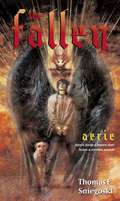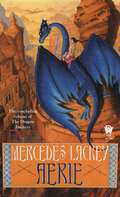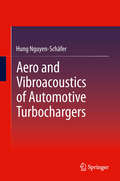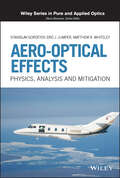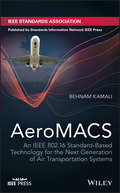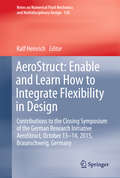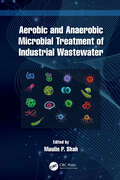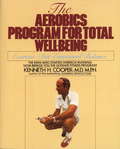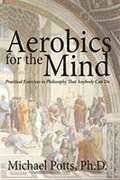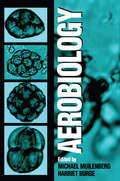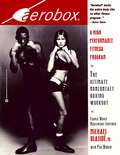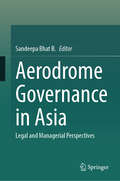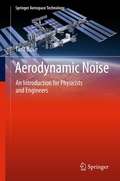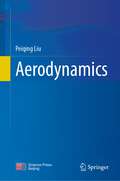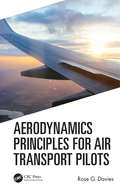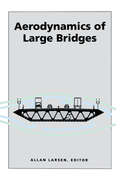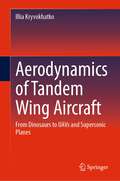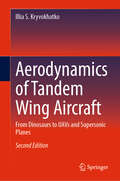- Table View
- List View
Aerie
by Maria Dahvana HeadleyThe stunning sequel to Maria Dahvana Headley's critically acclaimed Magonia tells the story of one girl who must make an impossible choice between two families, two homes--and two versions of herself.Aza Ray is back on earth. Her boyfriend, Jason, is overjoyed. Her family is healed. She's living a normal life, or as normal as it can be if you've spent the past year dying, waking up on a sky ship, and discovering that your song can change the world.As in, not normal. Part of Aza still yearns for the clouds, no matter how much she loves the people on the ground.When Jason's paranoia over Aza's safety causes him to make a terrible mistake, Aza finds herself a fugitive in Magonia, tasked with opposing her radical, bloodthirsty, recently escaped mother, Zal Quel, and her singing partner, Dai. She must travel to the edge of the world in search of a legendary weapon, the Flock, in a journey through fire and identity that will transform her forever.Told in Maria Headley's trademark John Green-meets-Neil Gaiman voice, Aerie is sure to satisfy the many readers who can't wait to return to the spellbinding world of Magonia.
Aerie
by Thomas E. Sniegoskihaven? or hell? Aaron Corbet is an eighteen-year-old Nephilim and the one who will reunite the fallen angels with Heaven. But right now Aaron isn't interested in saving anybody other than himself, his magically powered dog, and his younger, autistic foster brother, Steven, from Verchiel, the cruel leader of the Powers. Verchiel is bent on destroying Aaron, and with him all hope of angelic reconciliation. With the help of a fallen angel, Aaron manages to arrive in the angelic refuge known as Aerie. Though he hopes to catch his breath before continuing the Good Fight, Aaron learns that the other residents of Aerie are concerned about his presence and his role in their future. But how can he win their trust when he has accidentally led the Powers straight to the sanctuary of the Fallen?
Aerie: Book Four of the Dragon Jousters (Dragon Jousters #4)
by Mercedes LackeyIn the fourth and final novel of Mercedes Lackey's Dragon Jousters series, Kiron, the man who had once been a dragon-boy called Vetch, has united the dragon riders and managed to rid their world of both war and magical domination. But are the evil Magi really gone for good? As Kiron tries to build a new civilization at the site of an abandoned cliff dweller's city, called Aerie, conflicts arise, and he soon realizes there is a vast conspiracy at work, which includes individuals who have infiltrated every walk of life-even his own family. Once the heads of the Magi, these conspirators are determined to regain their sinister control. .
Aero Engine Combustor Casing: Experimental Design and Fatigue Studies
by Niranjan Sarangi Sashi Kanta PanigrahiThe book is focused on theoretical and experimental investigation aimed at detecting and selecting proper information related to the fundamental aspect of combustion casing design,performance and life evaluation parameters. A rational approach has been adopted to the analysis domain underlying the complexities of the process.
Aero and Vibroacoustics of Automotive Turbochargers
by Hung Nguyen-SchäferAero and Vibroacoustics of Automotive Turbochargers is a topic involving aspects from the working fields of thermodynamics of turbomachinery, aerodynamics, rotordynamics, and noise propagation computation. In this broadly interdisciplinary subject, thermodynamics of turbomachinery is used to design the turbocharger and to determine its operating conditions. Aerodynamics is needed to study the compressor flow dynamics and flow instabilities of rotating stall and surge, which can produce growling and whining-type noises. Rotordynamics is necessary to study rotor unbalance and self-excited oil-whirl instabilities, which lead to whistling and constant tone-type noises in rotating floating oil-film type bearings. For the special case of turbochargers using ball bearings, some high-order harmonic and wear noises also manifest in the rotor operating range. Lastly, noise propagation computation, based on Lighthill's analogy, is required to investigate airborne noises produced by turbochargers in passenger vehicles. The content of this book is intended for advanced undergraduates, graduates in mechanical engineering, research scientists and practicing engineers who want to better understand the interactions between these working fields and the resulting impact on the interesting topic of Aero and Vibroacoustics of Automotive Turbochargers.
Aero-Neurosis: Pilots of the First World War and the Psychological Legacies of Combat
by Mark C. Wilkins&“Lays bare the grim reality of life on a frontline squadron . . . the comprehensive physical, emotional, and mental decline these aviators endured.&” —Donna&’s Book Blog The young men who flew and fought during the First World War had no idea what was awaiting them. The &“technology shock&” that coalesced at the Western Front was not envisaged by any of the leadership or medical establishment. Despite the attendant horrors many men experienced, some felt that the dynamic context of aerial combat was something that, after the war, they still longed for . . . Doctors argued over best practice for treatment. Of course, the military wanted these men to return to duty as quickly as possible; with mounting casualties, each country needed every man. Aviation psychiatry arose as a new subset of the field, attempting to treat psychological symptoms previously unseen in combatants. The unique conditions of combat flying produced a whole new type of neurosis. Terms such as &“Aero-neurosis&” were coined to provide the necessary label yet, like shell shock, they were inadequate when it came to describing the full and complete shock to the psyche. Mark C. Wilkins finds the psychology undergirding historical events fascinating and of chief interest to him as an historian. He has included expert medical testimony and excerpts where relevant in a fascinating book that explores the legacies of aerial combat, illustrating the ways in which pilots had to amalgamate their suffering and experiences into their postwar lives. Their attempts to do so can perhaps be seen as an extension of their heroism. &“An original and absorbing study of the psychological factors of the first air war.&” —Firetrench
Aero-Optical Effects: Physics, Analysis and Mitigation (Wiley Series in Pure and Applied Optics)
by Stanislav Gordeyev Eric J. Jumper Matthew R. WhiteleyAERO-OPTICAL EFFECTS Explore the newest techniques and technologies used to mitigate the effects of air flow over airborne laser platforms Aero-Optical Effects: Physics, Analysis and Mitigation delivers a detailed and insightful introduction to aero-optics and fully describes the current understanding of the physical causes of aero-optical effects from turbulent flows at different speeds. In addition to presenting a thorough discussion of instrumentation, data reduction, and data analysis, the authors examine various approaches to aero-optical effect mitigation using both flow control and adaptive optics approaches. The book explores the sources, characteristics, measurement approaches, and mitigation means to reduce aero-optics wavefront error. It also examines the precise measurements of aero-optical effects and the instrumentation of aero-optics. Flow control for aero-optical applications is discussed, as are approaches like passive flow control, active and hybrid flow control, and closed-loop flow control. Readers will benefit from discussions of the applications of aero-optics in relation to fields like directed energy and high-speed communications. Readers will also enjoy a wide variety of useful features and topics, including: Comprehensive discussions of both aero-effects, which include the effects that air flow has over a beam director mounted on an aircraft, and aero-optics, which include atmospheric effects that degrade the ability of an airborne laser to focus a beam A treatment of air buffeting and its effects on beam stabilization and jitter An analysis of mitigating impediments to the use of high-quality laser beams from aircraft as weapons or communications systems Adaptive optics compensation for aero-optical disturbances Perfect for researchers, engineers, and scientists involved with laser weapon and beam control systems, Aero-Optical Effects: Physics, Analysis and Mitigation will also earn a place in the libraries of principal investigators in defense contract work and independent research and development.
AeroMACS: An IEEE 802.16 Standard-Based Technology for the Next Generation of Air Transportation Systems
by Behnam KamaliThis is a pioneering textbook on the comprehensive description of AeroMACS technology. It also presents the process of developing a new technology based on an established standard, in this case IEEE802.16 standards suite. The text introduces readers to the field of airport surface communications systems and provides them with comprehensive coverage of one the key components of the Next Generation Air Transportation System (NextGen); i.e., AeroMACS. It begins with a critical review of the legacy aeronautical communications system and a discussion of the impetus behind its replacement with network-centric digital technologies. It then describes wireless mobile channel characteristics in general, and focuses on the airport surface channel over the 5GHz band. This is followed by an extensive coverage of major features of IEEE 802.16-2009 Physical Layer (PHY)and Medium Access Control (MAC) Sublayer. The text then provides a comprehensive coverage of the AeroMACS standardization process, from technology selection to network deployment. AeroMACS is then explored as a short-range high-data-throughput broadband wireless communications system, with concentration on the AeroMACS PHY layer and MAC sublayer main features, followed by making a strong case in favor of the IEEE 802.16j Amendment as the foundational standard for AeroMACS networks. AeroMACS: An IEEE 802.16 Standard-Based Technology for the Next Generation of Air Transportation Systems covers topics such as Orthogonal Frequency Division Multiple Access (OFDMA), coded OFDMA, scalable OFDMA, Adaptive Modulation-Coding (AMC), Multiple-Input Multiple-Output (MIMO) systems, Error Control Coding (ECC) and Automatic Repeat Request (ARQ) techniques, Time Division Duplexing (TDD), Inter-Application Interference (IAI), and so on. It also looks at future trends and developments of AeroMACS networks as they are deployed across the world, focusing on concepts that may be applied to improve the future capacity. In addition, this text: Discusses the challenges posed by complexities of airport radio channels as well as those pertaining to broadband transmissions Examines physical layer (PHY) and Media Access Control (MAC) sublayer protocols and signal processing techniques of AeroMACS inherited from IEEE 802.16 standard and WiMAX networks Compares AeroMACS and how it relates to IEEE 802.16 Standard-Based WiMAX AeroMACS: An IEEE 802.16 Standard-Based Technology for the Next Generation of Air Transportation Systems will appeal to engineers and technical professionals involved in the research and development of AeroMACS, technical staffers of government agencies in aviation sectors, and graduate students interested in standard-based wireless networking analysis, design, and development.
AeroStruct: Contributions to the Closing Symposium of the German Research Initiative AeroStruct, October 13–14, 2015, Braunschweig, Germany (Notes on Numerical Fluid Mechanics and Multidisciplinary Design #138)
by Ralf HeinrichThis book reports on the German research initiative AeroStruct, a three-year collaborative project between universities and the aircraft industry. It describes the development of an integrated multidisciplinary simulation environment for aircraft analysis and optimization using high-fidelity methods. This system is able to run at a high level of automatism, thus representing a step forward with respect to previous ones. Its special features are: a CAD description that is independent from the disciplines involved, an automated CFD mesh generation and an automated structure model generation including a sizing process. The book also reports on test cases by both industrial partners and DLR demonstrating the advantages of the new environment and its suitability for the industry. These results were also discussed during the AeroStruct closing Symposium, which took place on 13-14 October 2015 at the DLR in Braunschweig, Germany. The book provides expert readers with a timely report on multidisciplinary aircraft design and optimization. Thanks to a good balance between theory and practice, it is expected to address an audience of both academics and professional, and to offer them new ideas for future research and development.
AeroTech Service Group, Inc.
by Andrew Mcafee David M. UptonAeroTech Service Group uses Internet protocols and other advanced computing technologies to interconnect the IS networks of McDonnell-Douglas Aerospace with many of its customers, suppliers, and other partners. The case discusses AeroTech's product and explores options for growing the firm.
Aerobic and Anaerobic Microbial Treatment of Industrial Wastewater
by Maulin P. ShahIndustrial wastewater can contain many toxic pollutants as well as varying concentrations of organic and inorganic matter. These pollutants can be carcinogenic, mutagenic, or hardly biodegradable, which could cause serious human health risks and also affect other aquatic and terrestrial biota as well. Biological treatment techniques for industrial wastewater, including aerobic and anaerobic digestion, are known to be environmentally friendly, clean, and generally superior to other physicochemical techniques. Aerobic and Anaerobic Microbial Treatment of Industrial Wastewater presents the latest information on multiple bioremediation treatment techniques; summarizes the sources, occurrence, and removal of industrial pollutants; and suggests the most appropriate treatment options for different scenarios. Describes the biochemistry of pollutant removal by aerobic and anaerobic digestion. Highlights emerging pollutants as well as resource recovery techniques from contaminated industrial wastewater. Emphasizes the role of both conventional and innovative novel technologies in aerobic and anaerobic microbial bioremediation of pollutants originated from industrial wastewater.
Aerobics Program For Total Well-Being: Exercise, Diet , And Emotional Balance
by Kenneth H. CooperFrom the medical authority, whose previous bestsellers (Aerobics, The New Aerobics, The Aerobics Way, and Aerobics for Women) have sold more than 12 million copies, comes an exciting, new and comprehensive concept for total fitness. . . . Millions have benefited from Dr. Cooper&’s famous aerobic exercise programs. He has revolutionized the way Americans get in shape and stay in shape. Now, he presents a complete program for total well-being—physically, nutritionally, emotionally. Discover for yourself why it is the most effective, enjoyable and medically sound approach to a lifetime of energy and good health.A program designed to bring physical and emotional health and vitality to every area of your life, including: • the 7 benefits of integrated aerobic exercise, including reduced risk of heart disease• the 4 types of exercise that have been most radically re-evaluated in terms of aerobic exercise• the 3 dozen ways to stay fit, and the 4 steps to making it fun• 3 complete weeks of nutritious menus• guidelines for the 22 components of a comprehensive medical exam, so you can work with your doctor to evaluate your level of fitness• plus, the aerobics way to diminish physical and emotional stress, enhance your sex life, and more
Aerobics for the Mind: Practical Exercises in Philosophy that Anybody Can Do
by Michael PottsRemember when you were a child and incessantly asked your parents "Why?" You still had that childhood gift of wondering about everything from the simple "Why can't I touch the stove eye when it's red?" to the most profound questions people can ask "Why can't I see God if He's real?" <p> A common perception of philosophers is of the wizened old guru, sitting on a mountain top contemplating his navel; or worse, a stodgy, boring intellectual that everyone avoids at parties. But philosophy, at its best, is a joyous profession. Philosophers never stop wondering, why? They ask the most profound and universal questions: "Why am I here?" "Does life have a meaning?" "Is there a God?" "Do I have an immortal soul?" "What happens when I die?" Philosophers have the joy of re-living the wonder of a child. <p> Aerobics for the Mind: Practical Exercises in Philosophy that Anybody Can Do is a book for anyone who still has that unique, childlike sense of wonder.
Aerobiology
by Michael L. Muilenberg Harriet A. BurgeAerobiology is the study of airborne particles that have an impact on humans and other organisms. Every day, we are exposed to airborne particles, including "natural" particles such as pollen, bacteria, and fungi, and "unnatural" particles, such as asbestos fibers and noxious chemicals. Aerobiology highlights the current interests in this field, primarily the ecology and distribution of airborne particles and their effects on health.
Aerobox: A High Performance Fitness Program
by Michael Olajide Jr.Designed by a former world-class middleweight boxer, here is the fitness crossover sensation of the '90s--a cardiovascular and toning exercise program that channels the aerobic intensity of a boxer's workout into an exhilarating non-contact fitness program.
Aerodrome Governance in Asia: Legal and Managerial Perspectives
by Sandeepa Bhat B.This book disseminates valuable information from both legal and managerial sides related to airport governance in Asia. With the expansion of existing airports and construction of new airports, legal and managerial aspects have become most significant for different stakeholders. Recognizing the continuous rising importance of the sector, aviation law and management courses are also being offered across the globe. The book caters to the needs of a wide spectrum of readers including scholars, researchers and students of law, aviation management, international relations and related fields; policymakers, regulators and government officials who are involved in regulating, managing and developing aerodromes in Asian countries; and professionals in aviation industry; including airport operators, airlines, aviation consultants and legal practitioners.
Aerodynamic Noise: An Introduction for Physicists and Engineers (Springer Aerospace Technology #7)
by Tarit BoseAerodynamic Noise extensively covers the theoretical basis and mathematical modeling of sound, especially the undesirable sounds produced by aircraft. This noise could come from an aircraft's engine--propellers, fans, combustion chamber, jets--or the vehicle itself--external surfaces--or from sonic booms. The majority of the sound produced is due to the motion of air and its interaction with solid boundaries, and this is the main discussion of the book. With problem sets at the end of each chapter, Aerodynamic Noise is ideal for graduate students of mechanical and aerospace engineering. It may also be useful for designers of cars, trains, and wind turbines.
Aerodynamic and Aerothermodynamic Analysis of Space Mission Vehicles
by Antonio Viviani Giuseppe PezzellaPresenting an up-to-date view on the most important space vehicle configurations, this book contains detailed analyses for several different type of space mission profiles while considering important factors such as aerodynamic loads, aerodynamic heating, vehicle stability and landing characteristics. With that in mind, the authors provide a detailed overview on different state-of-the-art themes of hypersonic aerodynamics and aerothermodynamics, and consider different space vehicle shapes useful for different space mission objectives. These include: #65533; Crew Return Vehicle (CRV) #65533; Crew Exploration Vehicle (CEV) #65533; Sample Return Vehicle (SRV) #65533; Flying Test Bed (FTB). Throughout Aerodynamic and Aerothermodynamic Analysis of Space Mission Vehicles many examples are given, with detailed computations and results for the aerodynamics and aerothermodynamics of all such configurations. Moreover, a final chapter on future launchers is provided and an Appendix on a possible manned mission to Mars closes the book. This work can be used as a reference for modelling and design techniques, for students intending to enter aerospace industrial careers, and to support both academics and engineers working in the field of space vehicle design. This book has been awarded the Basic Science Book award 2016 by the International Academy of Astronautics (IAA), presented during the 67th International Astronautical Congress (IAC2016) held in September 2016 in Guadalajara, Mexico.
Aerodynamics
by Peiqing LiuThis textbook highlights the fundamentals of aerodynamics and the applications in aeronautics. The textbook is divided into two parts: basic aerodynamics and applied aerodynamics. The first part focuses on the basic principles and methods of aerodynamics. The second part covers the aerodynamic characteristics of aircraft in low speed, subsonic, transonic and supersonic flows. The combination of the two parts aims to cultivate students' aerospace awareness, build the ability to raise and solve problems and the ability to make comprehensive use of the knowledge to carry out innovative practice. This book is intended for undergraduates majoring in aircraft design and engineering, engineering mechanics, flight mechanics, missile design, etc. It can also be used as a reference for postgraduates, researchers and engineers of aerospace related majors.
Aerodynamics Principles for Air Transport Pilots
by Rose G DaviesEquipping readers with the ability to analyze the aerodynamic forces on an aircraft, the book provides comprehensive knowledge of the characteristics of subsonic and supersonic airflow. This book begins with the fundamental physics principles of aerodynamics, then introduces the Continuity Equation, Energy Equations, and Bernoulli’s Equation, which form the basic aerodynamic principles for subsonic airflow. It provides a thorough understanding of the forces acting on an aircraft across a range of speeds and their effects on the aircraft's performance, including a discussion on the difference in aerofoil and aircraft shapes. Aircraft stability issues are analyzed, along with the development of a boundary layer over an aerofoil, the changes of air speed and air pressure, and boundary layer separation. Readers will gain a clear understanding of the nature of airflow over aircraft during subsonic, transonic, and supersonic flight. The book emphasizes the connection between operating actions in flight and aerodynamic requirements. The content will be of interest to senior undergraduates studying to obtain their Airline Transport Pilot License (ATPL)/Airline Transport Pilot (ATP) certificate, general aviation and air transport pilots, and aircraft maintenance engineers.
Aerodynamics Principles for Air Transport Pilots
by Rose G DaviesAerodynamics Principles for Air Transport Pilots provides a thorough understanding of the forces acting on an aircraft across a range of speeds and their effects on the aircraft's performance, including a discussion on the differences in aerofoil and aircraft shapes.Describing the differences of airflow around subsonic, transonic, and supersonic aircraft, the book gives readers a better understanding of aircraft behavior across different speed ranges. This book begins with the fundamental physics principles of aerodynamics, then introduces the continuity equation, energy equations, and Bernoulli’s equation. The second edition features new content on aircraft performance as a part of the applications of analysis of aerodynamic forces, new sections on features of aerofoil on aerodynamic forces, and force feedback on control of personal-computer-based aviation training device (PCATD).The book is intended for senior undergraduates studying to obtain their Airline Transport Pilot License (ATPL)/Airline Transport Pilot (ATP) certificate. Aviation and air transport pilots and aircraft maintenance engineers will also benefit from the content.
Aerodynamics for Engineers
by Russell M. Cummings John J. BertinNow reissued by Cambridge University Press, this sixth edition covers the fundamentals of aerodynamics using clear explanations and real-world examples. Aerodynamics concept boxes throughout showcase real-world applications, chapter objectives provide readers with a better understanding of the goal of each chapter and highlight the key 'take-home' concepts, and example problems aid understanding of how to apply core concepts. Coverage also includes the importance of aerodynamics to aircraft performance, applications of potential flow theory to aerodynamics, high-lift military airfoils, subsonic compressible transformations, and the distinguishing characteristics of hypersonic flow. Supported online by a solutions manual for instructors, MATLAB® files for example problems, and lecture slides for most chapters, this is an ideal textbook for undergraduates taking introductory courses in aerodynamics, and for graduates taking preparatory courses in aerodynamics before progressing to more advanced study.
Aerodynamics of Large Bridges: Proceedings Of The First International Symposium On Aerodynamics Of Large Bridges, Copenhagen, Denmark, 19-21 February 1992
by ALLAN LARSEN, DANISH MARITIME INSTITUTEAs bridges spans get longer, lighter and more slender, aerodynamic loads become a matter of serious study. This volume of proceedings reflect the co-operation between civil and mechanical engineering and meteorology in this field.
Aerodynamics of Tandem Wing Aircraft: From Dinosaurs to UAVs and Supersonic Planes
by Illia KryvokhatkoThis book contains extensive data about tandem wing aircraft. It includes a review of modern flying vehicles with four fixed wings, a review of analytical, numerical and experimental methods; results of the studies about aerodynamics; dependencies between geometrical parameters and aerodynamic characteristics, practical recommendations in development and optimizing of tandem wing aircraft to provide high lift-to-drag ratio, stability, and controllability. This is an ideal book for graduate students, researchers, and engineers working in fields of aerodynamics and conceptual design of the aircraft especially UAVs, ground-effect vehicles, and convertiplanes.
Aerodynamics of Tandem Wing Aircraft: From Dinosaurs to UAVs and Supersonic Planes
by Illia S. KryvokhatkoThis updated, second edition adds more reviews of modern four-winged aircraft belonging to convertiplanes, Medium Altitude Long Endurance UAVs, and solar planes. As in the first edition, different analytical, numerical, and experimental methods are discussed in detail. The book presents new sections on unsteady aerodynamic characteristics of tandem wings and specifics of their aerodynamic loading for stress analysis and structural design. Also, dependencies between key geometric parameters and aerodynamic characteristics were updated with new studies that helped to understand the physics more deeply and even reinterpret previous experimental results. Accordingly, practical recommendations in development and optimizing of tandem wing aircraft were updated to provide high endurance, wide range of flight velocities, stability, and controllability. This is an ideal book for graduate students, researchers, and engineers working in fields of aerodynamics and conceptual design of the aircraft especially UAVs and light piloted airplanes.

